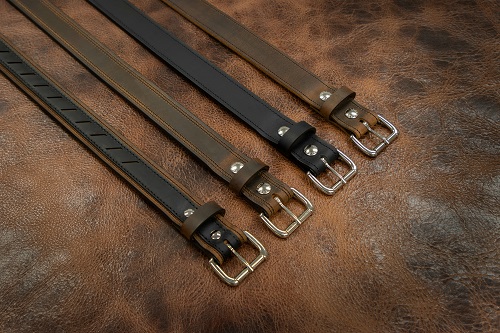Leather Belts Business

Type: Trading
Key Products for Sale:
Stylish leather belts in various colors and designs.
Technology Considerations:
Implement a basic online store for easy browsing and purchasing. Utilize social media platforms for marketing and customer engagement.
Market for the Products:
Target individuals who value quality accessories, including professionals, fashion enthusiasts, and gift shoppers.
Key Inputs into the Business:
High-quality leather from trusted suppliers, durable buckles and hardware, packaging materials, and skilled craftsmen for manufacturing.
Product Preparation Process:
Designing and crafting leather belts, including cutting, stitching, and finishing. Ensure each belt meets quality standards before packaging.
Quality Considerations:
Prioritize the use of genuine leather and durable hardware to ensure longevity and customer satisfaction. Conduct quality checks at each stage of production.
Cost of Investment:
Leather and Materials: KES 50,000 – KES 100,000
Manufacturing Equipment: KES 100,000 – KES 200,000
Website Development: KES 15,000 – KES 25,000
Initial Inventory: KES 50,000 – KES 100,000
Marketing and Branding: KES 10,000 – KES 15,000
Total Estimated Cost: KES 225,000 – KES 440,000
Required Operational Infrastructure:
Workshop or manufacturing space equipped with sewing machines, cutting tools, and storage for materials and finished products.
Most Suitable or Viable Location of the Business:
Set up the workshop in an industrial area with access to suppliers and affordable rent.
Potential Sources of Investment Capital:
Personal savings, small business loans, or partnerships with investors interested in fashion and accessories.
Requirements for Effective Management:
Efficient production processes, strict quality control measures, and effective inventory management to meet demand.
Role of Mobile Phones and ICT in the Business:
Use mobile phones for communication with suppliers, and customers, and for managing online orders. Utilize technology for online marketing and social media presence.
Statutory Regulations and Licenses:
Ensure compliance with local business registration, tax regulations, and any required permits for manufacturing and selling leather goods.
Pricing:
Set competitive prices based on production costs, market research, and perceived value. Consider offering discounts for bulk orders or loyalty programs.
Profitability:
Anticipate profitability through effective cost management, sales growth, and customer satisfaction. Calculate profit margins to ensure sustainability and growth.
Next Steps to Take:
Launch the online store, build brand awareness through social media marketing, attend local markets or craft fairs to showcase products, and expand product offerings based on customer feedback and market demand.

